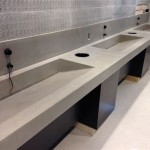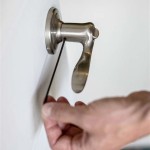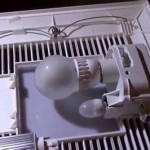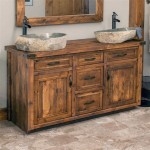Bathroom Sink Mixer Tap Dripping Water Inside
A dripping bathroom sink mixer tap can be a persistent annoyance and a source of wasted water. While a slow drip may seem insignificant, it can add up to a substantial amount over time, impacting both water bills and the environment. Often, the source of the drip isn't visible externally, indicating an internal problem within the mixer tap mechanism. Understanding the internal workings of these taps and the potential causes of internal dripping is crucial for effective troubleshooting and repair.
Mixer taps combine hot and cold water within the tap body before dispensing the mixed water through the spout. This intricate mechanism involves several internal components, including cartridges, O-rings, valves, and seals. These components work in concert to regulate water flow and temperature. Wear and tear, mineral buildup, or damage to any of these parts can lead to internal leaks and the characteristic dripping sound.
One of the most common culprits for internal dripping in mixer taps is a worn-out cartridge. The cartridge is a valve mechanism that controls the flow and mixing of hot and cold water. Over time, the rubber seals within the cartridge can degrade, allowing water to bypass the intended flow path and drip internally. Depending on the tap design, there may be one or two cartridges, one for hot and one for cold water regulation.
O-rings are small, circular rubber seals that provide a watertight barrier between different components within the tap. Deterioration or displacement of these O-rings can compromise the seal, leading to internal leaks. O-rings are susceptible to drying out, cracking, or becoming dislodged due to water pressure fluctuations or general wear and tear. Identifying the specific O-ring causing the leak requires careful disassembly and inspection of the tap internals.
Another potential cause of internal dripping is a faulty valve. While the cartridge often acts as the primary valve mechanism, some mixer taps incorporate additional valves for specific functions. These valves can become worn or damaged, leading to leaks within the tap body. Corrosion or mineral buildup can also interfere with valve operation, contributing to internal dripping.
Hard water, containing high levels of dissolved minerals, can contribute significantly to internal dripping issues. These minerals can accumulate on internal components, particularly the cartridge and valves, hindering their smooth operation and causing leaks. Regular cleaning and descaling can help mitigate the effects of hard water and prolong the life of the tap's internal components.
Addressing an internal dripping tap requires a methodical approach. Before attempting any repairs, it's essential to turn off the water supply to the tap. This typically involves closing the isolation valves located beneath the sink. Once the water is off, the tap can be carefully disassembled to access the internal components.
The specific disassembly process varies depending on the tap model. Consulting the manufacturer's instructions or online resources can provide valuable guidance. Once disassembled, the cartridge, O-rings, and valves should be inspected for signs of wear, damage, or mineral buildup. Worn or damaged parts should be replaced with identical components to ensure proper fit and function.
During reassembly, it's crucial to ensure all components are correctly aligned and securely tightened. Applying a small amount of plumber's grease to the O-rings and threads can improve the seal and prevent future leaks. Once reassembled, the water supply can be turned back on slowly to check for any remaining drips. If the dripping persists, further investigation or professional assistance may be necessary.
Preventing internal dripping requires proactive maintenance. Regularly cleaning the tap's aerator can help prevent mineral buildup. Periodically checking the water pressure can also prevent undue stress on internal components. Addressing minor drips promptly can prevent them from escalating into more significant and costly repairs.
Understanding the internal workings of a bathroom sink mixer tap and the potential causes of internal dripping empowers homeowners to address these issues effectively. While some repairs can be undertaken with basic DIY skills, complex issues may require the expertise of a qualified plumber. By understanding the mechanisms involved and taking preventative measures, homeowners can minimize the inconvenience and expense associated with dripping mixer taps.
Choosing high-quality taps from reputable manufacturers can also contribute to long-term reliability. Investing in durable components and robust construction can minimize the risk of premature wear and tear, reducing the likelihood of internal dripping issues. While initial costs may be higher, the longevity and reduced maintenance requirements can offset the investment over time.

5 Reasons Your Faucet Is Dripping Water How To Fix It

How To Fix A Dripping Tap Living By Homeserve

Water Dripping From Faucet Why And How To Fix

How To Fix A Leaky Faucet 5 Easy Steps

How To Change A Washer On Mixer Tap Living By Homeserve

12 Ways To Avoid A Leaking Faucet S D Plumbing

5 Easy Steps To Fix A Dripping Or Leaking Faucet Home Sweet Homes

How To Fix A Dripping Tap In Seconds Hometree

How To Fix Pipework A Tap Faucet Leaking Under The Sink

How To Repair A Mixer Tap Leaking At The Swivel Base
Related Posts







